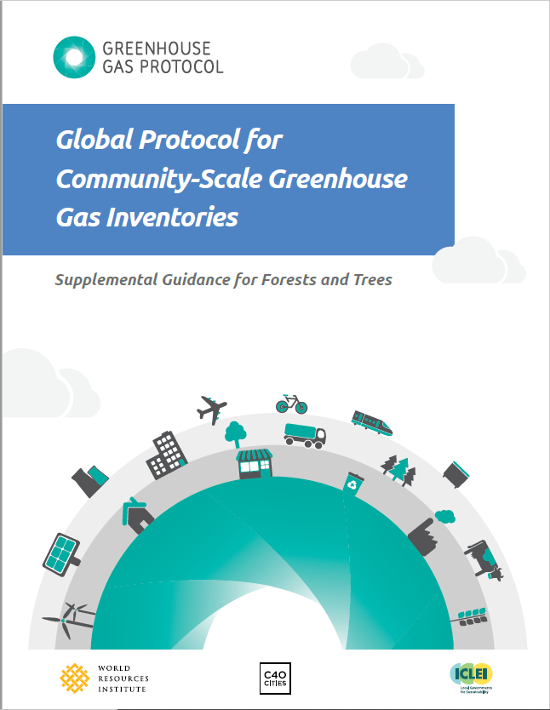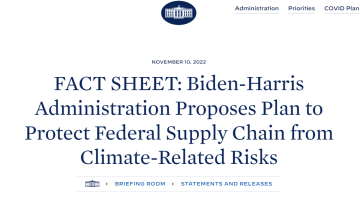STATEMENT: New Proposed Rule Requires Major Federal Contractors to Disclose GHG Emissions and Set Reduction Targets
WASHINGTON, D.C.
GPC Supplemental Guidance for Forests and Trees

Communities such as cities and counties are increasingly interested in understanding how nature-based solutions can help them reach their climate change mitigation and adaptation goals. However, many communities do not know what role their existing forests and trees already play in influencing greenhouse gas (GHG) emissions because they don’t include them in their inventories.
This supplemental guidance to the Global Protocol for Community-Scale Greenhouse Gas Inventories (GPC) provides detailed methods that communities can follow to estimate both GHG emissions from land-use change and other forest disturbances and carbon dioxide removals by forests and trees growing within their borders. It provides guidance on how to select appropriate data sources, perform calculations, ensure standardized reporting, and use the inventory information to set transparent climate action targets.
Land Sector and Removals Guidance

The GHG Protocol Land Sector and Removals Guidance explains how companies should account for and report GHG emissions and removals from land management, land use change, biogenic products, carbon dioxide removal technologies, and related activities in GHG inventories, building on the Corporate Standard and Scope 3 Standard.
The guidance is currently being developed through a global, inclusive multi-stakeholder development process which began in 2020. The Draft for Pilot Testing and Review is now available (see documents below). The Land Sector and Removals Standard and accompanying Guidance will be published in Q4 2025.The latest update about this workstream can be found here.
If you would like to receive updates, please subscribe here.
New ICAT Policy Assessment Guides for Countries
The recently launched Initiative for Climate Action Transparency (ICAT) policy assessment guides, built in part upon the Greenhouse Gas Protocol Policy and Action Standard, offer a set of methodologies to help countries assess the impacts of policies and actions that reduce greenhouse gas emissions, achieve sustainable development outcomes and drive transformational change.
New Greenhouse Gas Protocol Land Sector and Removals Guidance
The GHG Protocol is developing new guidance on how companies and organizations should account for greenhouse gas emissions and carbon removals from land use, land use change, bioenergy, and related topics.
Estimating and Reporting Avoided Emissions

There is considerable interest among companies in claiming that their products can help avoid greenhouse gas emissions compared to other products in the marketplace. While it’s true that the use of some products can help to avoid GHG emissions, accurately measuring a product’s impact—whether positive or negative—can be challenging.
This paper outlines a neutral framework for estimating and disclosing both positive and negative impacts of products and provides recommendations for companies to improve the credibility and consistency of their claims.
Investor Summit on Climate Risk
This event will convene 450 investor and capital market leaders to highlight climate-related investment risks and opportunities.
A Sector in Transition: Transportation in the 21st Century
Houston, Texas - Baker Institute and MIT will host experts for a discussion on the future of transportation.
Translating Climate Risk into Business Value: What Does it Take?
This is workshop is designed to help your company translate climate risk into action and develop effective disclosure practices





